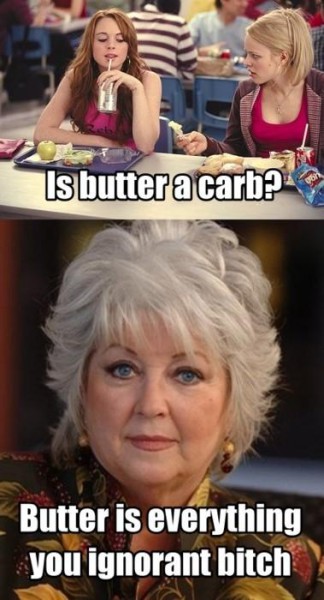PR Friday is an opportunity to be a part of this amusing and fun community. You don’t “need” to be a certain strength level — post your progress or weekly PR’s. Everyone is on the same quest of strength, muscularity, and performance.
I forgot to list a Weekly Challenge last week (oops — sometimes I write the rest of the post before I’ve decided on one). I offered a shirt for the “Manly Deeds” challenge a few weeks back and have a winner — will do a post next week on that.
Next Week’s Challenge comes from a friend who just got out of the “professional soldiering for Uncle Sam” business, and it is: complete as many trips up and down a set of monkey bars — note how many monkey bars one length is. Don’t do this wearing a ski mask and don’t do it during recess.
Week In Review: On Monday I started the 70’s Big Breast Cancer Fundraising campaign. Help us raise money in the Battle for the Boobs. Tuesday was a reiteration of the idea that instead of comparing yourself to someone strict pressing 260 for reps, be the best you can be with what you have. Wednesday was a quick beautiful piece titled, “Ode to Bacon“. Thursday was an inspirational post about never giving up.
Meanwhile I’ve been solo adventuring/camping around Colorado and am now in Denver for the Great American Beer Festival with some friends. Beers I tasted include: bacon beer, peanut butter beer, combining the peanut butter beer with a blackberry beer (essentially creating a PB&J), a beer made with BULL TESTICLES, and a beer that was so spicy I had to pray to the old gods to ask for forgiveness so that my soul would stop burning.
Q&A
Justin,
I’m about to graduate this December with an exercise science degree. I’ve been interning since May with my school’s strength and conditioning staff and will continue until next May when I go to get my CSCCa. I don’t want to go to grad school in order to work at a college, but since I want to open up my own gym, I feel like I need to get some collegiate experience so I can better train people. What is your advice on this? Also, what certifications do you think are most important for a trainer to s&c coach to have?Thanks for your help,
“chief” on 70sbig
Dear chief,
It sounds as though you’re doing the internship to satisfy your undergraduate requirements, but why do you have to wait that long in order to sit for the CSCS exam? Either way, it isn’t necessary to work in the collegiate realm if you want to own a gym. It certainly wouldn’t hurt, but it’s not necessary. I helped out (like an unofficial internship) in my university’s S&C program, but I was already owning/coaching CrossFit and had been personal training for a while. It’ll give you good experience for running classes, working with performance athletes, and seeing the logistics of a goal oriented facility.
All that being said, you could get in the gym industry without anything at all. I mean, look at all the people who start CrossFit facilities with just a few months of training experience. Sure, there are many CrossFit places that provide quality training, but there are also other facilities with coaches who have no business doing what they do. My only point is that the success of a gym business sadly isn’t solely dependent on the capability of the coach — this is a business that is dependent on the local market and the actions of the owner. If you are curious to talk more about business, I’m sure there are readers willing to do so (including friends of mine).
You already stated you don’t want to go to grad school so definitely don’t do it. It’s a slog, and you should only do it if you’re committed. As for certifications, I would sit for the CSCS as soon as you can. That really is the gold standard in the conventional fitness realm. I’ll point out that I don’t have it, but if I was going to get one to establish “credibility” for certain types of jobs or positions, that would be the one I would get. A certification doesn’t prove much, but some other good ones to have are USA Weightlifting and USA Track and Field.
Coaching and training isn’t about the letters after your name. And technically, education level (particularly S&C knowledge) isn’t dependent on certifications either. Your success in a business will be decided on how much you care for your clients. Your success as a S&C coach will depend on your ability to critically think, and I try and teach this skill through this website. Whatever you do, don’t stop learning.
NolanPower on said:
Justin, I have a very important question. I wore short shorts to a crossfit competition this weekend that I attended as a spectator (for those who have never been/hate crossfit/whatever, go, it’s awesome) and I went to watch my friend compete but I was constantly surrounded by girls attempting to tear off my clothes. What can I possibly do to avoid this horrible side effect of manly short shorts?
Dear NolanPower,
This is a normal, albeit unavoidable side effect. Recently I went to the grocery store right before midnight in short shorts and a tank-top. This funny guy I see regularly was there that night. A few weeks later he was checking me out at the register and I reminded him of that night (because I bought a three-foot banana squash because I thought it was funny). He says, “Oh yeah! You had those shorts on. We didn’t know if you were in a hurry or…if you were gonna kill us all…”
But then he said that the females enjoyed it. I say this because The Revolution is important. Every time a female sees you in short shorts, it provides a(n orgasmic) stimulus that alters her perception of manliness, masculinity, and attractiveness. Expose her with enough frequency, volume, and intensity, and she will soon forget that skinny guys have any relevancy in her life. This means that she’ll naturally select a mate who is burly, strong, and muscular. They may eventually mate and produce more stout offspring, thereby reducing the “skinny” variation from the gene pool. No, we’re not talking about ethnic cleansing, but we’re talking about fully capable humans and men in a time where frailty — both physically and socially — are glorified.
Justin, I have an athlete belt from Bestbelts which I’ve been using for the last two years or so. I’ve developed a chronic lower rib (floating) pain on the back a few inches from the spine. I’ve posted about it a couple times and someone asked if I had hyper lordosis but then never explained why they asked. To answer their question, I do have hyper lordosis.In my limited knowledge of the body, I’m guessing that perhaps the lordosis causes most of the belts pressure to be applied to the top and bottom of the belt since it probably isn’t entirely touching my back, perhaps causing undue pressure/stress on the ribs? Does that sound right? If so what are my options? At this point I’ve stopped deadlifting with a belt and plan on taking it off for squatting as well to see if it feels any better after a couple of weeks.At this point I wake up with my ribs aching, they ache at work and especially ache when wearing body armor.What are my options? Learn to live with squatting and deadlifting without a belt? Nylon belt? Thinner belt? I’m well into correcting my hyper lordosis with daily couch stretches and frequent psoas releases. Would stuffing a shirt or towel in the hollow spot of my back between the belt help?Thanks for your time and keep writing great articles!-Kev B.





